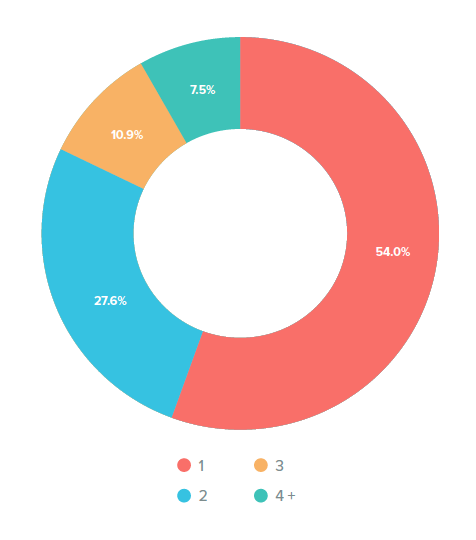Chart of the Day: How many email platforms are you using (Sending) – Part 6 of 6
This week is the final post in our series, and we will be looking at the number of email platforms that are currently being used to send segmented, triggered, and
transactional emails? (Catch-up on previous episodes.)
Why have more than one email platform? Doesn’t that sound a bit dodgy?
Email Service Providers (ESP) have had a reputation of being simple send engines. Some may have had slightly different functionality but if you wanted something more, you had to pay for it. But what would be a legitimate reason to have more than one email platform?
- Cost: prices increased with the number of email contacts in your database. So to keep costs down, many would split their lists and join another ESP.
- Multiple mail streams: having different ESPs will give you different IP addresses. Now, this is important because if you send transaction emails on one IP address, and those emails are opened and interacted with, your reputation will remain high (not stuck in spam filters etc). However, if you bulk send your newsletter, and the engagement rate is much lower, the reputation would be low on that IP address (more likely to be stuck in spam filters).
More complicated and integrated ESPs
ESPs realized that email marketing was changing, and so they had to too. So they added new features (segmentation, triggered, transactional, automation), added more integrations and left the old send engines behind. Email platforms have changed a lot over the years and the term “Email Service Provider (ESP)” may actually be underselling what these platforms can now do.
So the below chart shows that 54% only use one email platform. 27.6% still use two and worryingly 7.5% use more than four.
On a final note, if you are using more than one email platform, and it isn’t for legitimate reasons I would seriously rethink your approach for your customer’s sake. Reporting on different platforms is beyond difficult, so it will be difficult to understand your customer lifecycle. Which means if you don’t understand your customer, they will know it!

